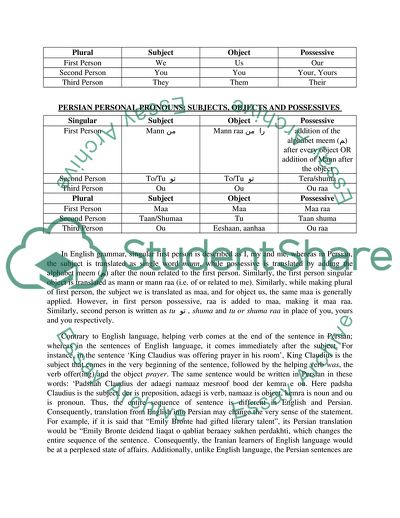Cite this document
(Comparing English with Persian Report Example | Topics and Well Written Essays - 2000 words - 1, n.d.)
Comparing English with Persian Report Example | Topics and Well Written Essays - 2000 words - 1. https://studentshare.org/education/1751629-comparing-english-with-persian
Comparing English with Persian Report Example | Topics and Well Written Essays - 2000 words - 1. https://studentshare.org/education/1751629-comparing-english-with-persian
(Comparing English With Persian Report Example | Topics and Well Written Essays - 2000 Words - 1)
Comparing English With Persian Report Example | Topics and Well Written Essays - 2000 Words - 1. https://studentshare.org/education/1751629-comparing-english-with-persian.
Comparing English With Persian Report Example | Topics and Well Written Essays - 2000 Words - 1. https://studentshare.org/education/1751629-comparing-english-with-persian.
“Comparing English With Persian Report Example | Topics and Well Written Essays - 2000 Words - 1”. https://studentshare.org/education/1751629-comparing-english-with-persian.


